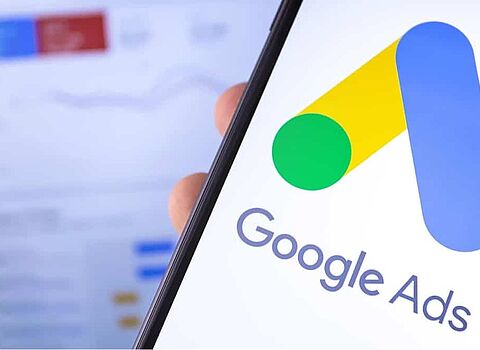"Being there is everything!" - Hasn't been true for a long time.
While social media channels used to be maintained on the side, today professionals are increasingly needed for effective social media marketing.
In the course of digitalization, targeted social media marketing has become increasingly relevant in recent years and now makes a decisive contribution to long-term business success.
Social media offers opportunities to pick up customers along the entire customer journey and thus provide for new sales opportunities.
A positive massage is easy to spread and generated recommendations have a positive impact. You should use this great potential for your company.
How can you judge if social media marketing really works?
In general, one should be aware that success can be viewed from two angles. On the one hand, the indirect success, which is difficult to measure because it is about "soft features" such as the image and the external presentation of the company.
On the other hand, marketing success with clearly measurable key figures. The definition of these key performance indicators (KPIs) is an important step in order to obtain a meaningful evaluation of the extent to which the channels have an impact on the marketing and ultimately on the company's goals.
Before starting the actual project or campaign, a suitable strategy should first be developed and clear goals defined.
As a basis for your strategy, you should always take your long-term business goals and align them with the short-term social media goals and align them with the respective platform. To do this, you need to be clear on both. What are your business goals, what are the goals of your action, and what do you want to achieve or learn about by measuring success?
It is most effective if you consider the topic of success measurement from the beginning and follow it continuously. The easier it will be for you to measure and evaluate the KPIs and to derive measures.
Once the goals have been clearly defined and the appropriate strategy has been chosen, the next step is to select relevant KPIs that can be used to measure the desired success.
A key performance indicator (KPI) is a measurable value that shows how effectively a company is achieving key business objectives.
KPIs exist at a variety of business levels and can provide insight into the success of the company's overall performance, but they can also be examined in smaller processes in different departments. The KPIs relevant for measuring success in social media marketing are often correlated to other KPIs in the company and can be correspondingly diverse. However, an initial narrowing down can already take place by looking at the factors that can really be measured in SMM.
Social Media Funnel:
An welchen Stellen kann der Erfolg gemessen werden und welche Social Media Marketing KPI's gibt es?
The term sales funnel (also called "sales funnel") is a consumer-oriented marketing model and serves as a tool in the B2B area and in sales.
The model represented as a funnel illustrates the different levels of the customer journey up to the purchase of a good or service.
In this article, we transfer this model to social media for a better overview, so that it quickly becomes clear which factors can be measured:
Perception: how is your marketing perceived by existing and potential audiences? Engagement: how are your target audiences interacting with your content? Conversion: how effective is your social media work? Consumers: How do active customers think and feel about your brand?
- Brand Awareness Brand awareness is the attention your brand receives over a specific time period and is expressed across channels in mentions, shares, links, and impressions.
- AudienceGrowth Rate The audience growth rate measures the rate at which your follower count is increasing. To calculate the growth rate of a reporting period, divide the net followers of each channel by the total audience and multiply the result times 100 = growth rate in percent.
- Post reach: Post reach indicates how many people saw the post. To calculate post reach, divide the reach by the total number of followers and multiply the result times 100 = post reach percentage.
- Potential Reach: Potential Reach measures the number of people who may have actually seen the post during the reporting period. If someone shares your post, two to five percent of their followers factor into your potential reach.
- Social Share of Voice (SSoV): social share of voice shows you how many people mentioned your brand compared to the competition. This includes both direct mentions ("@p2media") and indirect mentions ("p2media").
To capture the metric, count each mention of your own channel (across platforms) and the mentions of the competition together, then divide your own brand mentions by the total and multiply the result by 100.
- Applause rate The applause rate shows the number of approving actions (likes or favorites) a post receives in relation to the number of followers. To calculate this, add up approving actions of the post and divide by the total number of followers and multiply the result times 100 = applause rate in percent.
- Average engagement rate The average engagement rate indicator shows the number of engagement actions (likes, shares, comments) that a post achieves in relation to the total number of followers. Add up the interactions of the post and divide them by the total number of followers, multiply the result by 100 = average engagement rate in percent. A guideline for orientation: Facebook and Twitter have comparatively low engagement rates of approx. 0.5 - 1 percent, Instagram is already at approx. 3 to 6 percent here.
- Customer Testimonials Customer testimonials are any ratings, reviews, evaluations or comments that relate to your brand. positive testimonials naturally speak for you and your product and ensure trust and credibility with your target audience.
- Customer Satisfaction(CSat) Score The Customer Satisfaction (CSat) Score is designed to answer the question of how satisfied your customers are overall with your product. This question is answered using a scale on which your customers rate their satisfaction from, for example, 1 to 10 or poor to excellent. Especially on social media, this is a common way to ask customers about their satisfaction, so just start a clear and concise survey yourself. Add up all the ratings, divide the result by the number of survey takers. Multiply the result by 10 to get the Customer Satisfaction (CSat) Score.
FAZIT
In social media marketing, there are a number of key performance indicators that can seem a bit overwhelming at first glance.
In order not to lose the focus of your measure, it is advisable not to consider all KPIs in principle, but to limit yourself to a few, but relevant ones. In this context, you should ask yourself: which KPIs really make sense for my measure? What do I want to achieve?
Your goal should be to find out what influence your social media activities have and how you can derive measures based on this analysis.
Our support around marketing social media marketing:
- Together with you, we develop a target group-specific social media strategy for your company based on a comprehensive market and competition analysis as well as your desired target group.
- We are also happy to support you in the subsequent professional implementation, the targeted use of the channels and the subsequent measurement of the success of your social media activities.
- The planning and implementation of targeted and success-oriented ad campaigns on various channels is also one of our areas of expertise.
For holistic and successful online marketing, we are also happy to take care of the following topics:
Oliver Parrizas will be happy to answer any questions you may have on the subject. +49-800-911-91-91












